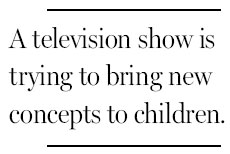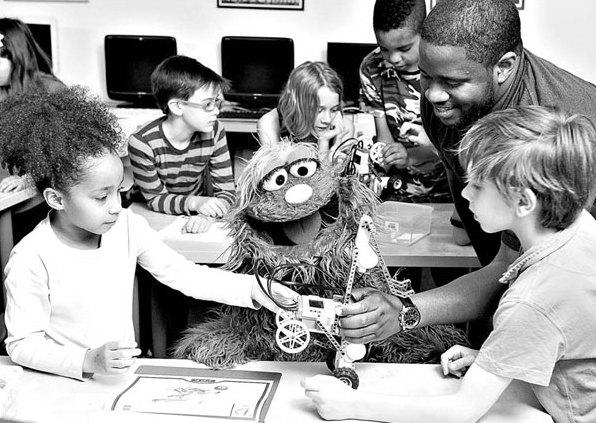From Muppets, math and science
Updated: 2013-09-15 07:31
By Elizabeth Jensen(The New York Times)
|
|||||||
On "Sesame Street," a distressed cow has a big problem. She made it up the stairs to the beauty parlor but now, her bouffant piled high, she's stuck. Cows can go up stairs, she moans, but not down.
Enter Super Grover 2.0. Out from his bottomless "utility sock" comes an enormous ramp, which, as the cow cheerily notes before clomping on down, is "a sloping surface that goes from high to low."
Simple ABCs and 123s? So old school. In the last four years, "Sesame Street" has set itself a much larger goal: teaching nature, math, science and engineering concepts and problem-solving to a preschool audience - with topics like how a pulley works or how to go about investigating what's making Mr. Snuffleupagus sneeze.
The content is wrapped in the traditional silliness; these are still Muppets. But the more sophisticated programming, on a show that frequently draws an audience even younger than the 3- to-5-year-olds it targets, raises a question: Is there any evidence that it is doing anything more than making parents feel good?
|
Murray Monster appears in science-focused segments of "Sesame Street." Zach Hyman |
Officials at Sesame Workshop, the nonprofit educational organization that produces the show, believe the new approach has succeeded in introducing children - at least, the target-age audience - to scientific ideas and methods.
"This is working," said Rosemarie Truglio, senior vice president of curriculum and content. Still, they acknowledge there are challenges in measuring a young child's scientific understanding, and experts are only just beginning to figure out what works.
Each new season of "Sesame Street" starts with a curriculum, drawn up by educational consultants and a research staff, laying out concepts and ideas to be taught. The show's writers incorporate these into scripts acted out by the beloved Muppets. The science curriculum began in 2009 with new programming that tried to capitalize on children's natural interest in the world around them, an effort inspired by Richard Louv's 2005 book "Last Child in the Woods: Saving Our Children From Nature-Deficit Disorder," Dr. Truglio said.
Bigger words, like "pollinate," "hibernate" and "camouflage" were added to the "Word on the Street" rotation. In one episode, Jimmy Fallon, a late night TV host, played a "wild nature survivor guy," who found water in leaves and shunned a coat in favor of warm feathers.
The show introduced the "Super Grover 2.0" segments. A blue Muppet known for confidently getting things wrong, Grover uses magnets, springs and "superpowers" of investigation, observation and reporting to solve problems through trial and error. Before settling on a ramp for the stuck cow, for instance, he tries a trampoline.

Elsewhere on the show, Murray Monster conducts mini-experiments on the streets of New York with children, discovering what bridge design holds the most weight and how a boat's shape helps it float. Last season, Elmo began starring in a daily musical of his imagination that sneakily incorporates math; in "Guacamole," he adds up the avocados on two trees.
On September 24, the material - as well as new videos, games, and parent and teacher resources - will find a new home online when Sesame Workshop unveils a hub on the "Sesame Street" Web site called "Little Discoverers: Big Fun With Science, Math and More."
But while children may be learning science from "Sesame Street," several educators noted that a television show alone can only teach so much.
"Children are natural scientists," said Kathy Conezio, a preschool science teacher and curriculum developer in Rochester, New York, who advised "Sesame Street" on science content.
Television gives children "a way of talking about what they are exploring," she added, but "it's better to have an adult doing it with you."
The new "Sesame" online site, Dr. Truglio said, is designed specifically "to bring the adults together with the children," showing them how to work the television science lessons into everyday activities.
She added: "It's the adults who are afraid of science and math and engineering."
The New York Times
(China Daily 09/15/2013 page10)
